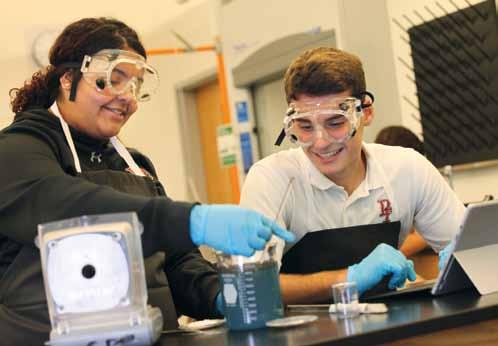
1 minute read
Microsoft 1:1 Initiative Learning Reimagined
Sparking the natural curiosity of young people and enabling them to be successful both in school and in their future work environments is an important part of a Pope Francis Prep education.
As the world moves rapidly through the twenty-first century, there is an urgent need to realign, rethink, and reinvent educational practices to meet the needs of modern learners, essentially reimagine how students understand new concepts. The challenge becomes how to find an approach that is agile, adaptable, and in tune with young people’s lives outside of the classroom. For Pope Francis Prep, that challenge is being met by the Microsoft 1:1 Initiative.
Advertisement
We believe that academic success requires the ability to think, communicate and collaborate effectively. The use of technology is integral in providing highly customized, interactive learning experiences that support these requirements. For the 2018-2019 academic year, all Pope Francis students were issued a Microsoft Surface Pro for their use as long as they remain enrolled at Pope Francis Prep. This initiative ensures that each student has the tools necessary to do the increasingly collaborative and dynamic work that is at the heart of a Pope Francis education - where we seek to take the best of in-class practices and complement them with the best in technological learning strategies.


The 1:1 initiative takes into consideration that technology can help improve teaching and learning when used as one piece of a larger solution. Simply giving each student a laptop, tablet or other device may not typically produce exceptional learning growth, unless you also adjust the teaching, collaboration, and assessment taking place. At Pope Francis, we are working daily to cultivate leadership and a culture of innovation among our learning community, to build capacity for technology; and to transform the learning environment to support these new initiatives. With this substantial shift in our pedagogy, we are able to recognize the impact these changes will have on how our students learn, the ways in which they are interacting with the world, and the positive outcomes achievable with 1:1 learning.






